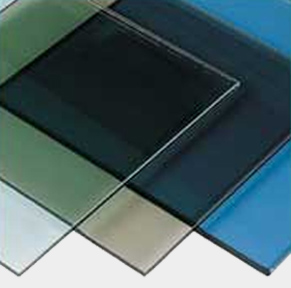heat absorbing window glass

Heat absorbing window glass is a type of window glass that contains special tints that cause the window to absorb as much as 45% of incoming solar energy, to reduce heat gain in an interior space. Tinted glass reduces the solar heat gain coefficient (SHGC), visible transmittance (VT), and glare.
Part of the absorbed heat continues to be passed through the window by conduction and reradiation, so the tint doesn't lower a window's U-value. Inner layers of clear glass or spectrally selective coatings can be applied on insulated glazing to help reduce these types of heat transfer.
The most common gray- and bronze-tinted windows are not spectrally selective, and reduce the penetration of both light and heat. Blue- and green-tinted windows offer greater penetration of visible light and slightly reduced heat transfer compared with other colors of tinted glass. In hot climates, black-tinted glass should be avoided because it absorbs more light than heat. Tinted, heat-absorbing glass reflects only a small percentage of light, so it does not have the mirror-like appearance of reflective glass. Note that when windows transmit less than 70% of visible light, indoor plants can die or grow more slowly.
